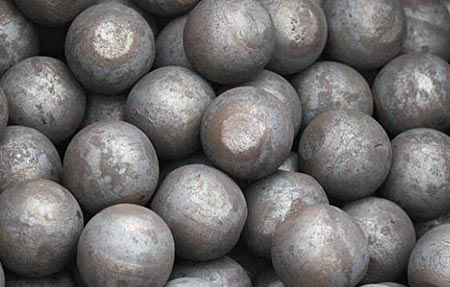What are the best balls for a ball mill?
Views: 281 Update Date:Nov 25 , 2024
When selecting balls for a ball mill, several factors need to be considered, including the material of the balls, their size, and the specific application or process requirements. Here are some of the most common materials used for ball mill media, along with their attributes:
- Advantages: High density and strength, suitable for grinding hard materials.
- Applications: Commonly used in mining, cement, and chemical industries.
- Advantages: Low wear rate, non-contaminating, and can handle high temperatures. They are ideal for applications where purity is important.
- Applications: Used in the pharmaceutical and food industries, as well as for grinding softer materials.
- Advantages: Good toughness and wear resistance, can be cost-effective.
- Applications: Often used in mineral processing.
- Advantages: Lightweight, non-abrasive, and resistant to corrosion and chemicals. They can reduce contamination risks.
- Applications: Suitable for sensitive materials, including pharmaceuticals and food products.
- Advantages: Non-reactive and easy to clean; good for fine grinding of soft materials.
- Density: A higher density usually results in more effective milling, as heavier balls impart more energy during impact.
- Shape: Spherical balls are standard, but in some cases, other shapes like cylpebs (cylindrical balls) can be beneficial for specific applications.
Prev: Forged Steel Ball & Grinding Rod: Key Tools for Milling
Next: How do you manufacture a steel ball?
1. Steel Balls:
- Material: Carbon steel or stainless steel.- Advantages: High density and strength, suitable for grinding hard materials.
- Applications: Commonly used in mining, cement, and chemical industries.
2. Ceramic Balls:
- Material: Alumina, zirconia, or other ceramic materials.- Advantages: Low wear rate, non-contaminating, and can handle high temperatures. They are ideal for applications where purity is important.
- Applications: Used in the pharmaceutical and food industries, as well as for grinding softer materials.
3. Cast Iron Balls:
- Material: Cast iron.- Advantages: Good toughness and wear resistance, can be cost-effective.
- Applications: Often used in mineral processing.
4. Polymer Balls:
- Material: Polyurethane, nylon, or PTFE (Teflon).- Advantages: Lightweight, non-abrasive, and resistant to corrosion and chemicals. They can reduce contamination risks.
- Applications: Suitable for sensitive materials, including pharmaceuticals and food products.
5. Glass Balls:
- Material: Soda-lime glass or borosilicate glass.- Advantages: Non-reactive and easy to clean; good for fine grinding of soft materials.
- Applications: Used in laboratories and applications requiring no metal contamination.

Size Considerations:
- The size of the balls is also crucial. Smaller balls are used for finer grinding and larger balls for coarse grinding. Typically, the diameter of the balls ranges from about 0.5 inches to 4 inches, depending on the size of the mll and the material being processed.Other Factors:
- Hardness: The hardness of the media should match or exceed that of the material being ground to prevent excessive wear.- Density: A higher density usually results in more effective milling, as heavier balls impart more energy during impact.
- Shape: Spherical balls are standard, but in some cases, other shapes like cylpebs (cylindrical balls) can be beneficial for specific applications.





